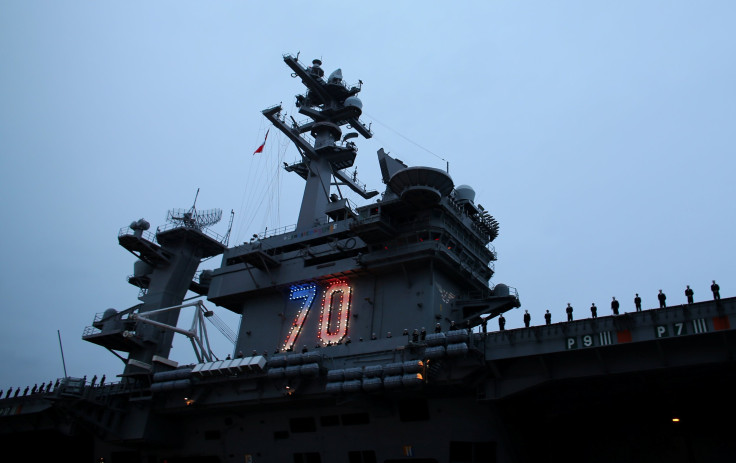South China Sea: USS Carl Vinson Holds Drill With Japanese Destroyer Days After Russia-China Show-Off
KEY POINTS
- Drills include flights and coordinated tactical training between surface and air units
- US Navy said the exercise aims to uphold international law on the sea and in the air
- Experts think the US aims to highlight its military presence in the region
A U.S. Navy carrier strike group is conducting a joint exercise with a Japanese helicopter destroyer in the South China Sea, days after China and Russia stoked tensions in the region with a joint drill.
USS Carl Vinson and its strike group are carrying out exercises with the Japan Maritime Self-Defence Force’s JS Kaga in the disputed waters, reported South China Morning Post. The drills include flight operations, coordinated tactical training between surface and air units, and maritime strike exercises, the U.S. Navy’s Seventh Fleet said in a statement Monday.
The drills assume significance in the wake of the recent passage of Russian and Chinese warships through the Tsugaru Strait that connects the Sea of Japan with the Pacific Ocean.
Though the Tsugaru strait is used for international navigation and the passage of foreign ships is not considered unlawful, the move was seen as a "calculated maneuver" by Russia and China. Following this, both countries conducted a joint drill in the Sea of Japan in mid-October.
Rear Admiral Daniel Martin, commander of the USS Carl Vinson strike group, said in the statement that the U.S. was demonstrating its unwavering commitment to upholding international law on the sea and in the air by conducting routine operations with its allies and partners.
#JMSDF helicopter destroyer JS Kaga (DDH 184) and #VINCSG are conducting bilateral operations in the South China Sea for the first time since the strike group deployed this summer.
— USS Carl Vinson (@CVN70) October 25, 2021
Read more at: https://t.co/ZLMJpouu9E#Mighty70 #ForgedByTheSea #AlliancesandPartnerships pic.twitter.com/UBoDn3ya50
However, analysts say the U.S.-Japanese joint drill is aimed at highlighting their partnership while dealing with China.
Cheung Mong, an associate professor with the School of International Liberal Studies at Waseda University in Japan, told the South China Morning Post that the U.S. Navy was highlighting its alliance with Japan in response to the recent activity by China and Russia.
"Since last year, the U.S. and Japan have conducted joint drills in the South China Sea many times, but this is the first time China and Russia have staged a joint [naval] drill in recent years," he said.
Cheung added, "Both the U.S. and Japan have attempted to highlight their partnerships when dealing with China, with the U.S. hoping that Japan will play an active role in the Taiwan contingency, while Tokyo wants Washington’s support in the Diaoyu (Senkaku) Islands issue,” he said.
China and Japan have been locked in a dispute over the Senkaku Islands in the East China Sea. China, which refers to the Senkakus as Diaoyu Islands, has been claiming rights over the Tokyo-administered group of uninhabited islands for decades.
Lu Li-shih, a former instructor at Taiwan’s Naval Academy in Kaohsiung, believes the joint drills are a way to show "cooperation and military might."
"The China-Russia drills in Japanese waters were a way to counter the naval exercises in the region earlier this month, led by American and British aircraft carriers. That has then pushed the U.S. to highlight its military presence in the region through the naval drill with Japan this week," Lu told the news outlet.

© Copyright IBTimes 2024. All rights reserved.





















